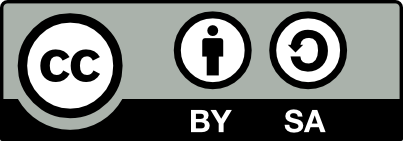
International Journal For Multidisciplinary Research
E-ISSN: 2582-2160
•
Impact Factor: 9.24
A Widely Indexed Open Access Peer Reviewed Multidisciplinary Bi-monthly Scholarly International Journal
Home
Research Paper
Submit Research Paper
Publication Guidelines
Publication Charges
Upload Documents
Track Status / Pay Fees / Download Publication Certi.
Editors & Reviewers
View All
Join as a Reviewer
Get Membership Certificate
Current Issue
Publication Archive
Conference
Publishing Conf. with IJFMR
Upcoming Conference(s) ↓
WSMCDD-2025
GSMCDD-2025
Conferences Published ↓
RBS:RH-COVID-19 (2023)
ICMRS'23
PIPRDA-2023
Contact Us
Plagiarism is checked by the leading plagiarism checker
Call for Paper
Volume 7 Issue 2
March-April 2025
Indexing Partners



















Exploring the Instructional Leadership of School Heads of Matnog II District
| Author(s) | Reynand F. Garduque |
|---|---|
| Country | Philippines |
| Abstract | The study revealed that school heads view their leadership roles as essential in creating a supportive environment for effective teaching and learning. Many believe that their involvement in goal-setting, collaboration, and innovative teaching practices can drive educational reforms and improve student engagement and performances. However, some school heads feel limited by administrative responsibilities, standardized testing pressures, and compliance demands, which can lead to frustration and affect their ability to focus on instructional leadership. Effective instructional leadership is seen as a means to boost teacher motivation and foster a culture of continuous improvement. School heads work to enhance collaboration among teachers and encourage innovative teaching strategies, though challenges like limited resources, resistance to change, and inadequate professional development can hinder implementation. Despite these obstacles, they remain dedicated to making a positive impact on instructional practices and student outcomes. School heads prioritize clear communication and collaborative decision-making, engaging teachers in strategy development to increase accountability and ownership. They provide feedback through mentoring and professional development, aiming to strengthen teaching practices and improve student learning. Nevertheless, inconsistent application of these strategies across departments, varying teacher engagement levels, and limited time due to administrative demands can affect the overall success of these initiatives. In Matnog, instructional leadership plays a key role in enhancing teacher performance by offering professional development and mentoring, leading to higher job satisfaction and improved student engagement. However, disparities in resources and support across schools can lead to burnout among teachers and inconsistent student outcomes, highlighting the need for equitable resource allocation to sustain instructional leadership efforts across the district. To address these challenges, the study recommends developing a structured instructional leadership framework for school heads in Matnog II District. This framework would outline roles and responsibilities, encourage collaboration, and integrate regular professional development and data-driven decision-making. A clear structure could empower school heads to lead more effectively, improving teacher performance and student achievement. However, successful implementation will require addressing potential resistance to new methods and ensuring comprehensive training and resources are in place to support school heads. Ultimately, school heads need consistent professional development and streamlined administrative processes that allow them to focus on instructional leadership. The study also suggests creating regular professional learning communities for teachers, fostering collaboration and continuous improvement in teaching practices. By investing in these areas and ensuring a unified approach to instructional leadership, schools in Matnog can strengthen educational outcomes and support school heads and teachers in fulfilling their roles effectively. Ultimately, school heads need consistent professional development and streamlined administrative processes that allow them to focus on instructional leadership. The study also suggests creating regular professional learning. Based on the study's findings, a clear picture emerges of the critical role school heads play in instructional leadership and educational outcomes. First, the positive perception among school heads regarding their influence on instructional programs highlights the significant potential leadership has in driving improvements within schools. However, for school heads to fully realize this potential, they need consistent support and resources. These provisions would enable them to not only implement but sustain effective teaching practices over time. Equally important is the acknowledgment of challenges they face, such as overwhelming administrative responsibilities. Such challenges underscore a need for systemic changes that reduce administrative burdens, allowing school heads to dedicate more of their efforts toward instructional leadership. When school heads have the tools and support to navigate these challenges, their effectiveness in shaping instructional programs and, consequently, student learning outcomes can be greatly enhanced. Additionally, the study underscores the positive impact that school heads’ leadership has on instructional practices. This finding reaffirms the necessity for ongoing support and development programs that empower school heads to foster a collaborative environment. When school leaders reinforce a shared vision and encourage innovation, they can elevate teaching quality and boost student engagement. Yet, the challenges faced in this context, including resistance and limited resources, point to a pressing need for systemic support. By offering targeted professional development and ensuring adequate resources, schools can establish a more conducive environment for implementing effective instructional leadership. This shift would ultimately support improved educational outcomes for all students. Moreover, the strategies that successful school heads employ underscore the importance of collaboration and support in strengthening instructional practices. To make the most of these strategies, schools should prioritize ongoing training and dedicate time specifically for collaboration, ensuring that all staff members are both engaged and accountable in the instructional process. A notable challenge, however, is the inconsistency in strategy application across schools. This variability highlights the need for a systematic approach that ensures all teachers receive the same level of support and engagement. By creating a cohesive framework for implementation, schools can work toward a unified approach that improves classroom instruction and promotes student learning across the board. Moreover, the strategies that successful school heads employ underscore the importance of collaboration and support in strengthening instructional practices. To make the most of these strategies, schools should prioritize ongoing training. Investing in professional development for school heads is essential to foster their leadership capabilities and create a culture of collaboration among teachers. By enhancing school leaders' skills, educational reforms and curriculum improvements can be more effectively driven. When school heads are equipped with the right tools and leadership training, they are better prepared to foster positive changes within their schools. Furthermore, the implementation of streamlined administrative processes and additional support staff would relieve school heads of unnecessary bureaucratic tasks, allowing them to focus more on instructional leadership and personalized teaching strategies that directly benefit students. |
| Keywords | Teaching and Learning Process, Matnog II District, Educational Outcomes, Perception, Challenges |
| Published In | Volume 7, Issue 1, January-February 2025 |
| Published On | 2025-02-18 |
| DOI | https://doi.org/10.36948/ijfmr.2025.v07i01.37102 |
| Short DOI | https://doi.org/g85sv4 |
Share this

E-ISSN 2582-2160
CrossRef DOI is assigned to each research paper published in our journal.
IJFMR DOI prefix is
10.36948/ijfmr
Downloads
All research papers published on this website are licensed under Creative Commons Attribution-ShareAlike 4.0 International License, and all rights belong to their respective authors/researchers.

